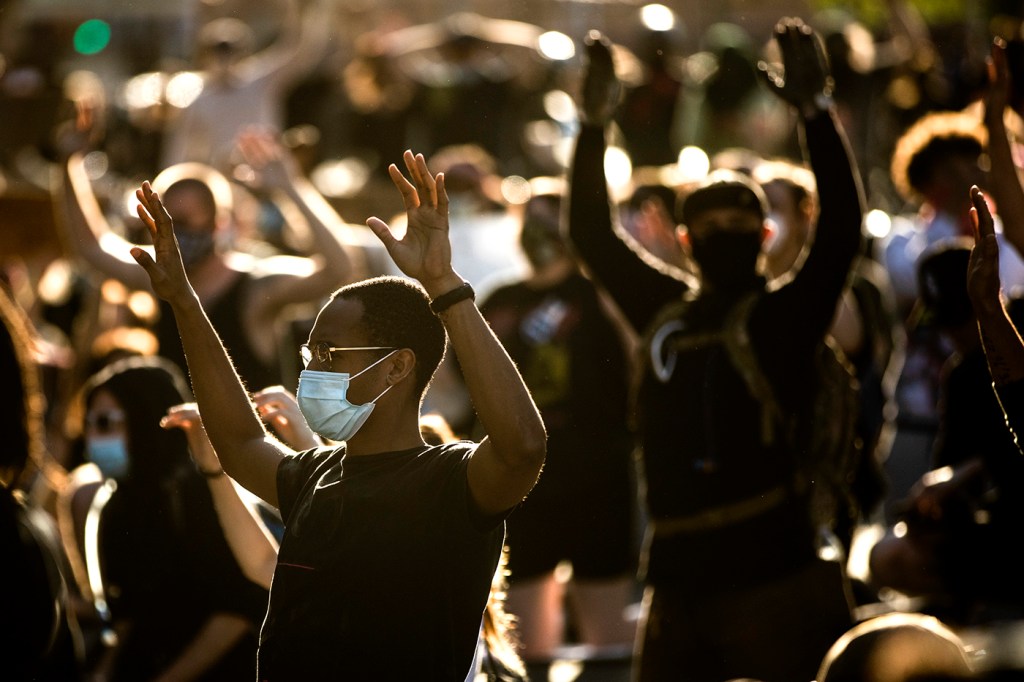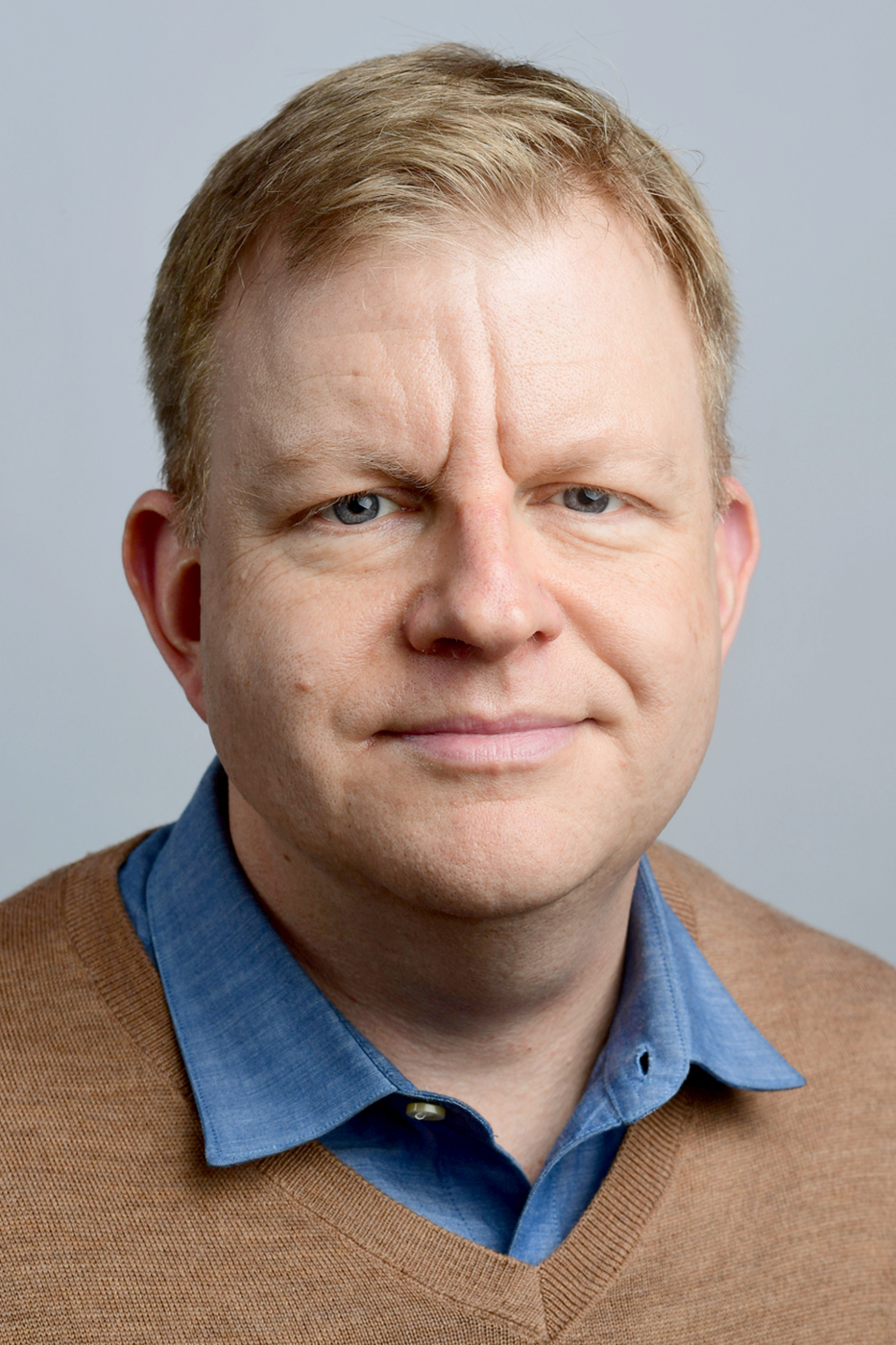George Floyd’s death has brought people out to protest, despite the COVID-19 pandemic

On May 25, a Black man named George Floyd died in police custody, a phenomenon that affects African Americans three times more often than white Americans. This happened in the context of the COVID-19 pandemic, in which African Americans—whose proportion in frontline work and therefore exposure to SARS-CoV-2, the coronavirus that causes COVID-19, is nearly double their percentage of the U.S. population—are dying from COVID-19 nearly three times as often as their white counterparts.

William Sharp, assistant teaching professor of psychology, has witnessed the emotional toll that lockdown and the COVID-19 pandemic has had on people, but it hasn’t prevented scores of people from protesting killings of Black people by police, he says. Photo by Matthew Modoono/Northeastern University
“There’s a perfect storm,” says psychoanalyst William Sharp, “because what COVID really highlighted is the inequities between people.”
Mass protests are happening in spite of public health guidance for stemming the spread of COVID-19. However, a drive to publicly oppose the treatment of Black people may share a purpose with a drive to stay home: to protect the most vulnerable. As Sharp says, people may tell themselves, “I’m going to go and risk my own health because this is just so heinous a crime.”
Photos of protests across the U.S. in recent weeks show many demonstrators wearing masks, suggesting that people who have otherwise heeded public health guidance may now see assembling in public as an equal—if not more effective—way to express solidarity with the vulnerable.
In Boston on Tuesday, thousands marched through Franklin Park; hands in the air, chanting “Don’t shoot,” they called out the names of Floyd, Breonna Taylor, and Ahmaud Arbery through cloth face masks. Their gloved hands held signs reading “Black lives matter” and “Enough is Enough;” some handed out masks to people who didn’t have them, and hand sanitizer.
As the crowd began to disperse, police motorcycles came barreling up the road, followed by a half-dozen SUVs, and at least one police van. Where the crowd was thin, people scattered out of the way, yelling obscenities. Where the crowd was thicker, protesters stopped the cars, surrounding one, and eventually forcing the line of police cars to back out of the crowd and turn around.
The protest, along with hundreds of others across the U.S., demonstrated the galvanizing effect of the killing of Floyd.
“This one event can motivate things in you that you haven’t been feeling for weeks,” says Sharp, even if, before May 25, you were feeling burnt out or were committed to staying home to stop the spread of the coronavirus.
“Sometimes the feeling or the thought about humans is when we’ve exhausted our willpower, or we’re in a state of hopelessness, that there’s no other feelings we can have,” says Sharp. “And I think we’re way more complex than that.”
David DeSteno, professor of psychology at Northeastern, has corroborated this through research on people’s capacity to care. Specifically, his work shows that experiencing suffering of one’s own can protect people from becoming apathetic about the suffering of others.
Sharp, who teaches in Northeastern’s department of psychology in addition to maintaining a private therapy practice, recalls how, in response to the pandemic alone, his patients and psychology students had already been describing experiences that bounced from anger to depression to denial and back. Some were depressed; others felt hopeless.
Burnout has been widely reported. But, he says, “nothing in human experiences is very linear,” and with a change in context, he says, particularly one that asks for protection of a community that was already suffering, “you can find an anger and an energy that you never had before to go out and protest.”
Since COVID-19 began spreading across the United States, the quick clip of the outbreak has denied people a glimpse of normalcy and a chance to reflect on all the changes that have taken its place, says Sharp.
On top of that, he adds, a pandemic differs from something like a terrorist attack because the government has put safety measures in place against something that people can’t directly observe; “it’s this invisible enemy,” says Sharp.
The exception is if and when a person becomes infected and develops symptoms, and that happens more often to people of color, who together make up 41% of U.S. workers on the front lines of the battle to save lives. African Americans specifically are disproportionately supplying essential work in the pandemic, as well as disproportionately dying from the disease at the root of it.
Again, African Americans are also more likely to be killed by police.
When a Black man died in police custody after a white officer kneeled on his neck for nearly nine minutes, mass protest flooded streets that had been intentionally kept clear for months. Some states, such as Minnesota, where Floyd died, also still officially cap social gatherings at 10 people.
However, while researchers worry about a surge in infection as a result of the demonstrations, some have chosen not to condemn the gatherings but to encourage demonstrators to take precautions while participating in them. In this way, protestors may not compromise their causes, but consolidate their goals.
For media inquiries, please contact media@northeastern.edu.





